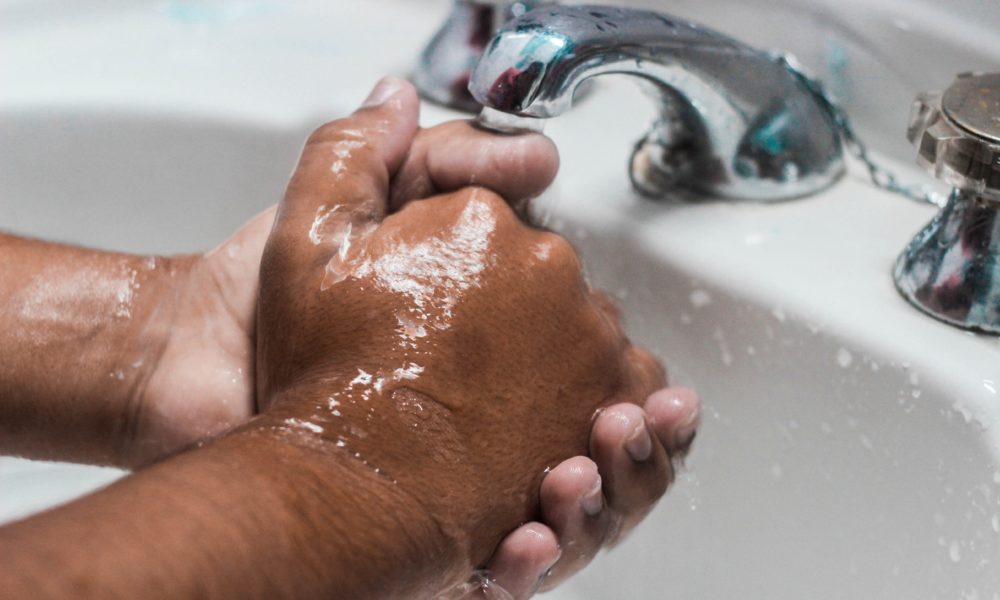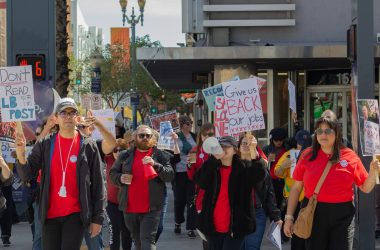Though the coronavirus pandemic has affected individuals worldwide, statistics show that in America, Black people have been disproportionately more affected compared to other communities.
According to an NPR analysis, Black people are becoming infected and dying at rates 1.5 times their global population. This statistic was reflected in Long Beach as of last April, as Black individuals made up 13% of the city’s population but 21% of the global population.
This disparity is being seen in communities across the nation as a result of several socioeconomic factors that had been in place before the coronavirus pandemic began early last year.
“Black people are more likely to be frontline, essential workers who aren’t able to work from home,” Dr. Anissa Davis, Long Beach City Health Officer, saids. “We are also a larger proportion of people experiencing homelessness in Long Beach.”
Due to historical redlining polices and racial residential segregation, Black people are more likely to live in crowded housing conditions or intergenerational homes, making it difficult to practice social distancing and ensure the safety of others in a household. Statistics also indicate that Black individuals’ access to health care is also more likely to be inconsistent.
“Black people are disproportionately affected with underlying health conditions that put [them] at higher risk for serious illness or dying of COVID, such as diabetes, obesity and smoking,” Davis said in an email. “We are more likely to be uninsured and underinsured.”
Data has shown that Black people are affected by diabetes, hypertension and heart disease at a higher rate than white people, and compared with white children, Black kids die from asthma at a 500% higher rate.
Geography such as neighborhood divides can also contribute to this health disparity, as concluded by a 2017 Princeton University study.
Low income neighborhoods are more likely to be in food deserts, or areas where healthy food can be difficult to find. These neighborhoods are less likely to have major supermarkets, and instead have smaller establishments like liquor stores, bodegas and gas stations that are typically stocked with cheaper, unhealthy foods rather than healthier, organic or fresh options.
Though this inequality can be seen nationwide, locally Long Beach has been able to find a middle ground between populations and hospitalizations. Currently, Black people make up 12% of the city’s population and 12% of coronavirus-related hospitalizations. White people account for 28% of the city’s population, yet make up 18% of hospitalizations.
“These disparities are long-standing and multifaceted and are rooted in our country’s legacy and current systemic racism,” Davis wrote. “These disparities need to be addressed at multiple levels.”
Addressing systemic racism in the community will not be fixed by one institution alone, Davis said, as she urged the continuation of the collaborative efforts of “numerous stakeholders, including the health department, elected officials, faith-based leaders and other activists.” She feels these groups should continue with outreach and educate the Black community on best practices for preventing the spread of COVID-19.
Many of these entities are working to not only fight racism, but to improve housing, education, health and wealth, as well as limit tobacco use in the Black community, Davis said.
Even with vaccinations, there is discrepancy between communities. According to demographics from 23 states, white residents are being vaccinated at rates double or higher than those of Black residents.
Data has shown that this is a result of not only structural racism barriers, but also mistrust of the medical field. In a survey conducted by the Public Policy Institute of California, only 29% of Black people said they would “definitely” or “probably” get vaccinated.
This mistrust isn’t unwarranted, however. Historically, Black individuals who are underserved have been exploited for medical experimentation. For instance, a 40-year study was conducted by the United States Public Health Service and the Tuskegee Institute in Alabama, tracking the progression of untreated syphilis in Black men. The study continued even after treatments for the disease were discovered.
Black women die at rates 2.5 times that of white women during childbirth, a result of susceptibility to health conditions and institutional racism.
“It’s important that we all meet each other where they are and address the community’s priorities, not put your own ideas on the community,” Davis said, referring to a lack of trust of the medical field. “[We have to] be there for the long haul, and stand up and speak up for the community.”
Disparities across the medical field, including COVID-19 statistics, mothers’ mortality rates, access to health care and likelihood of disease, indicate that the health industry is another institution in which Black people are dying at alarming rates, Davis said. Increasing access to food and educational opportunities will assist in combatting this issue, she said, as well as implementing housing policies.
Davis maintained that, although it will take time to reach a more equitable health care industry, it is important to be knowledgeable of ways to stay safe for oneself and to help each other in the community.
“We have to hang in there. Our cases and hospitalizations are decreasing, but they’re still really high,” Davis said. “Vaccines are very helpful in the fight, but you’re still going to need to wear masks, avoid crowds and gather outside of your household, physically distance [yourself] and wash your hands.”





Pingback: Professional sports gross show of socio-economic disparity - Daily Forty-Niner